Хаас за Азербайджан
Ромен Грожан:
You’ve advanced to the final round of qualifying in every event this season. How has the team’s methodology and execution augmented your own skills behind the wheel?
I think the car is fast in qualifying, and we know it, so that’s how we’ve managed to go through to Q3. Obviously, what happened in Q3 in China was not ideal, but the car is fast in qualifying and that’s why we’ve made it into the top-10 each Saturday this season.
Emulating the success of qualifying in the race has proven to be difficult, at least in the last two races. What are you feeling in the car during qualifying that you’re not feeling in the race?
The grip is going. We have good grip in qualifying. On new tires, the car is amazing, but when we go into the race, we’re losing the grip and things become a bit more complicated. That’s the problem we’re facing at the moment. It’s probably coming from the way we use the tires. We haven’t managed to get on top of it yet. That’s our number one priority for the next few races.
The tires seem to have an even smaller operating window than they did last year. Is that accurate, or is it more a matter of getting the tires into their operating window rather than keeping them in that window?
That’s what we’re trying to find out. The window may have moved, or the operating of the tires may be a bit different with the thinner treads. Obviously the chassis is good, otherwise we wouldn’t be so fast in qualifying, we wouldn’t be so fast over one lap. We need to understand the tires a bit more, and where the window is and how we get there. That’s the next task for the engineers.
Rich Energy Haas F1 Team had speed throughout the Australian Grand Prix race weekend. With it taking place at a street circuit, do you envision some carryover of that kind of sustained speed when you return to Baku City Circuit?
No, not really – for various reasons. Australia was very warm, we managed to get the tires to work well. Baku is a different circuit, it’s probably closer to China. We need to work really hard before Baku to try to understand how to get the tires to work. That’s really going to be the key for us there.
Baku has been described as a mix between Monza and Monaco. That means high speeds at a very tight track. How do you expect this year’s new aero package to impact the race, both in terms of the speed you can achieve and the overtaking opportunities that will be available?
Overtaking in Baku has always been good. The straight line is so long that you get a massive tow, a massive slipstream, which is always good. It’s probably a racetrack that is much more fun in the race than in qualifying. In qualifying, you’re dealing with those 90-degree corners, it’s not as good as some other places. The race is always very exciting. It’s probably one of those circuits, along with Monza, where the new aero package won’t have much impact. Racing has always been good there, so there wasn’t a big need for changes. Let’s see how we get on.
Кевин Магнусен: You’ve advanced to the final round of qualifying in every event this season. How has the team’s methodology and execution augmented your own skills behind the wheel?
I think it’s really good that we’ve been able to do so well in qualifying this year, but obviously we also want to convert that into points in the race. That’s where our main focus is at. It’s great to know the car is competitive over one lap, therefore it should be competitive in a race, as well. We just need to work hard at that.
Emulating the success of qualifying in the race has proven to be difficult, at least in the last two races. What are you feeling in the car during qualifying that you’re not feeling in the race?
The only difference there is between qualifying and the race is that you fill it up with fuel and do more laps on the same set of tires. It’s got to be something with the tires. We don’t understand the full picture, yet, but we’re working hard to figure it out.
The tires seem to have an even smaller operating window than they did last year. Is that accurate, or is it more a matter of getting the tires into their operating window rather than keeping them in that window?
The tires are slightly different this year. You have a thinner tread on the tires, which obviously would have some effect, but mainly it should help with blistering. I don’t know, though, it’s definitely the thing we’re focused on at the moment, trying to get more out of the tires in the race.
Rich Energy Haas F1 Team had speed throughout the Australian Grand Prix race weekend. With it taking place at a street circuit, do you envision some carryover of that kind of sustained speed when you return to Baku City Circuit?
I think they’re two very different tracks. Baku is a low-downforce track with very long straights, slow corners, and quite low grip from the track. It’s going to be interesting to see how we go there. I don’t anticipate it to be our strongest circuit of the year, but I’m still positive we can go there and fight for points.
Baku has been described as a mix between Monza and Monaco. That means high speeds at a very tight track. How do you expect this year’s new aero package to impact the race, both in terms of the speed you can achieve and the overtaking opportunities that will be available?
I don’t know if this year’s new aero package will do too much. Maybe the bigger DRS will mean that you’ll get easier overtaking, which was already easy in Baku. So, we’ll see how that goes. I don’t know if the DRS zones have been shortened, but maybe they should be as I think in Baku the difference would be very, very big between DRS and non-DRS. Baku always offers a great race with lots of action, so we’re looking forward to going there.
Гюнтер Щайнер: You’ve advanced to the final round of qualifying in every event this season. How has the team’s methodology and execution contributed to this run?
I think you always have to execute in a perfect manner to get through to Q3. Having a good car to start off with helps a lot, then you just leave it to the drivers to get it done. I think race engineering has done a good job with that.
Emulating the success of qualifying in the race has proven to be difficult, at least in the last two races. Have you been able to pinpoint why the speed shown in qualifying has been difficult to replicate in the race?
Yes, we learned a lot in the two-day test after the Bahrain Grand Prix. We understand it, we just couldn’t find solutions in time for the upcoming events, because you need to develop those solutions and parts. Hopefully we’ll get on top of that one, sort the problem, and be as competitive in the race as we are in qualifying.
The tires seem to have an even smaller operating window than they did last year. Is that accurate, or is it more a matter of getting the tires into their operating window rather than keeping them in that window?
I couldn’t say that it’s more difficult than last year because the car is different – we’ve developed a completely new car. We just know that we cannot get the tires to work in the race. How big the window is, and to keep in it, is difficult to define. We definitely don’t get it in the window, so I wouldn’t know what it takes to keep it in the window.
Rich Energy Haas F1 Team had speed throughout the Australian Grand Prix race weekend. With it taking place at a street circuit, do you envision some carryover of that kind of sustained speed when you return to Baku City Circuit?
Baku will be another difficult event for us because of the long straight and the slow, low-energy corners. Hopefully some of our solutions will work, which we’ve been working on since the test in Bahrain – to get the tires into the window. Otherwise, Baku could be another difficult circuit for us.
Baku has been described as a mix between Monza and Monaco. That means high speeds at a very tight track. How do you expect this year’s new aero package to impact the race, both in terms of the speed you can achieve and the overtaking opportunities that will be available?
You always expect the unexpected, but we need to get lucky at some stage because, up until now, we haven’t had a lot of good luck. Hopefully, if something should happen, we’ll be in a good position and can get something out of it in a good way for us.


















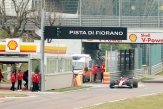
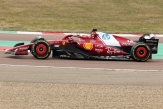
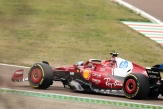
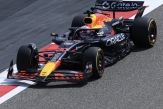
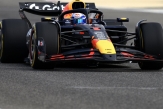
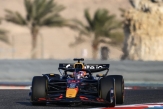

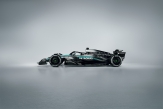
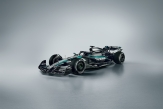
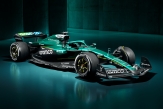
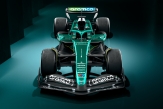
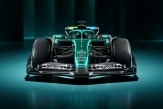
.jpg)
.jpg)
.jpg)

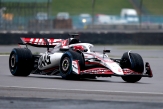

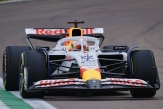
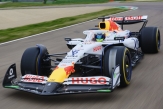
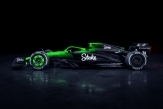
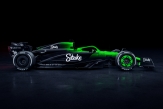

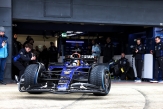
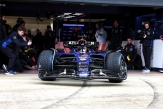
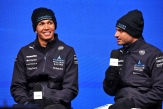

15/10/2025 от Огнян Тенчев (drJeckyll), няма коментари